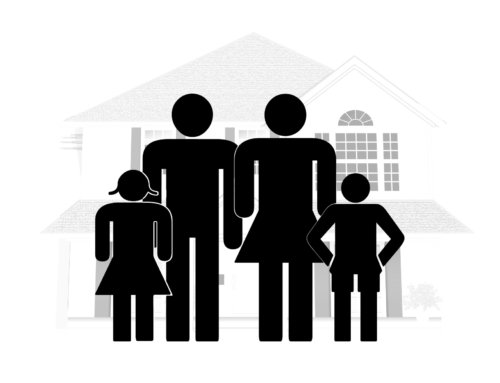About 19.7 million American adults battled with a substance abuse disorder in a single year. Though there are over 14,500 specialized substance abuse treatment facilities in the US, not everyone receives the care they need. Meanwhile, the relapse rate is somewhere between 40 and 60%.
If you recently completed rehabilitation, it’s important to find the tools you need to maintain your sobriety. Staying in a sober living house could help.
What is a sober living home, exactly, and how can it help you maintain your sobriety? How can finding a sober living house benefit your life? Keep reading to find out.
After reading this guide, you can make a more informed decision regarding your health, future, and long-term sobriety. Read on to learn more!
What is a Sober Living Home?
After completing rehabilitation or drug abuse treatment, many people return to a high-risk living environment. They could encounter the triggers that lead them to start using in the first place. Answering the question “what is a sober living home” could offer a solution.
What is a sober living house, exactly?
Sober living homes offer individuals a substance-free, safe living environment. People who are in recovery can find the structure they need. These homes are also called recovery residences and halfway houses.
It’s important to know what to look for before choosing a sober living home. Otherwise, you might fail to find the support you need.
The best sober living facility will offer a compassionate, trained staff. They’ll help by enforcing strict rules and a safe, structured living environment. These rules are designed to help you pursue a healthier, substance-free lifestyle.
Before entering a sober living home, you’ll need to complete your rehabilitation treatment. You’ll need to abstain from alcohol and drug use during your time in the home. Otherwise, you could lose your room.
Types of Sober Living Homes
In order to answer the question “what is a sober living home,” you’ll need to consider the type of help you need. There are four different levels of care available. The living conditions, cost, services, and rules can vary between sober living homes.
For example, some sober living homes will require you to participate in a 12-step program. Others require residents to attend in-house group meetings. You’ll likely undergo regular drug testing, too.
A level 1 sober living home is run by residents. These homes emphasize peer support.
In a level 1 sober living home, you won’t receive in-house treatment. You’re not required to complete a 12-step program, though it is advised.
Before entering the home, you’ll need to complete an interview process, lead by the current residents. You’ll need to get an 80% vote of approval before you’re accepted into the home. All residents need to complete chores and pay rent.
Level 2 sober living homes are usually lead by an elected house manager. Services might include:
Self-help groups
Mandatory treatment
Drug screening
House meetings
With level 3 and 4 facilities, there’s usually administrative oversight. A certified staff usually remains on-site, too.
Sober living homes aren’t monitored by state agencies. Rather, the homes are maintained through fees.
Staying in a sober living home will help you prioritize your safety and wellness through peer support. You can avoid your chances of a relapse by seeking the help and support you need.
The Rules
Before choosing a sober living facility, take the time to consider the rules. Each facility has its own set of rules. However, a few common sober living house rules include:
Completing household chores
Abstaining from alcohol and other drugs
Complying to random urine tests
Participating in house meetings
Complying with established curfews
Participating in outpatient treatment or community support groups
Avoiding intimate relationships with other residents
Keeping drug paraphernalia or items promoting drug use out of the house
Paying rent on time
No violence, offensive language, or threats
You’ll receive a written agreement outlining the sober living house rules before you move in. Violating these rules usually results in eviction.
Services
Each sober living house will offer its own list of services. These might include:
Relapse prevention counseling
Life skills training
Educational programming
12-step meetings
Group therapy
Vocational training
You might have your own room, though in some cases, you’ll need to share a room. Some homes also offer fitness areas, cookout areas, and recreational space. You can choose between different sober living homes based on your needs and preferences.
Some homes are also located near outpatient treatment centers. You might benefit from having a residential rehab facility nearby.
What to Look For
It’s not enough to answer the question “what is a sober living house?” You’ll need to consider your distinct needs and preferences before choosing a home.
First, take the time to consider the level of service you need. Remember, sober living homes are organized into four levels. Each level offers more structure than the last.
If you’re struggling to maintain your sobriety after an intense addiction, consider level 3 or 4 facilities. You might consider a level 4 facility if your addiction lasted over a year. If your addiction wasn’t as intense, you can look into level 1 or 2 facilities.
All four levels will provide you with a drug-free living environment. You’ll need to share costs with other residents, including rent and utilities. Each facility can offer the peer support you need to maintain your sobriety.
Once you determine what level of care you need, consider where you want to stay. For example, you can look into different sober living homes in Orange County, CA.
Make sure the sober living home is in a safe neighborhood. Choose a location that’s a safe distance from any bars or other temptations.
Try to find an accredited or licensed sober living home. Some homes are backed by the National Alliance for Recovery Residences. These homes strive to reach a higher standard of care.
Tour a few of the facilities on your list. During your tour, speak with the staff. Are they licensed and qualified to help you maintain your sobriety?
Don’t forget to ask about the sober living house rules, too. Remember, you might benefit from staying in a more structured home.
Then, consider your insurance plan. You can find a home that suits your budget and treatment needs.
The Benefits of Finding a Sober Living Facility
Not having a stable, alcohol- and drug-free living environment could impact someone’s ability to maintain long-term sobriety. According to one study, staying in a sober living facility has helped previous addicts remain sober.
Here are a few benefits to keep in mind as you consider finding a sober living house in the area.
1. Transition With Ease
After completing your rehabilitation, it’s normal to fall into old habits. Unfortunately, certain triggers could cause you to relapse. Instead, you can maintain your sobriety by starting the transition in a sober living facility.
Moving from a rehab center to a sober living facility can make the transition feel more natural. You’ll still have access to the tools and resources you need. Meanwhile, you can start working or going to school again.
If you ever feel like you’re struggling, you can turn to your support group.
Over time, you’ll adapt to being back in the real world.
2. Hold Yourself Accountable
Individuals who stayed in sober living homes had improved abstinence rates. Living in a sober living home could help you hold yourself accountable. Remember, you’ll have to undergo regular drug screenings to keep your room in the house.
Meanwhile, you’ll have to pick up new responsibilities and follow the sober living house rules.
Gaining more responsibilities can also help you remain responsible for your sobriety.
3. Helpful Resources
You don’t have to learn how to maintain your sobriety alone. One of the great benefits of staying in a sober living home is the support you’ll find. You can surround yourself with people who intimately understand what you’re experiencing.
If you ever feel like you’re struggling to maintain your sobriety, you can turn to other residents or the staff. They can help you find the tools you need to maintain your sobriety.
4. Develop Structure
While living in a sober living facility, you can establish your new routine and gain structure in your life. A routine can help you stay on track with your sobriety.
You can also gain new skills while living in a sober living home. For example, you might want to consider vocational training. You can build your skill set and establish a new career.
5. Attend Meetings
Attending weekly resident or 12-step meetings can help you maintain your sobriety, too. You can talk about your day and the process of reintegrating. If you’re struggling, you’ll have someone to talk to.
You can use these meetings to find advice from people who were once in your shoes.
What is a Sober Living Home?: Staying on Your Road to Recovery
After completing your rehabilitation, reintegrating into the real world can feel like a struggle. Answering the question “what is a sober living home” could help. You can find the support you need, when you need it most.
Interested in finding a sober living facility near you? We can help.
Explore our directory today to get started.










Leave A Comment